Oysters are an exclusive delicacy with a taste of the sea. But how do you actually open them? And what is the best way to serve them? We offer tips and some interesting facts about oysters.
Innehållsförteckning
A delicacy that tastes of the sea
Oysters are not only exclusive and festive. According to National Food Agency oysters are also an environmentally friendly food that contains several nutrients such as protein, vitamin B12, iodine and selenium. Some people love oysters, while others may find the texture a bit scary.
We have gradually learnt to eat oysters on different trips and in different restaurants. One occasion we remember in particular was when, during a Seafood feast in Halifax in Canada got to try oysters from different regions along with several different sauces. Very tasty and exciting!
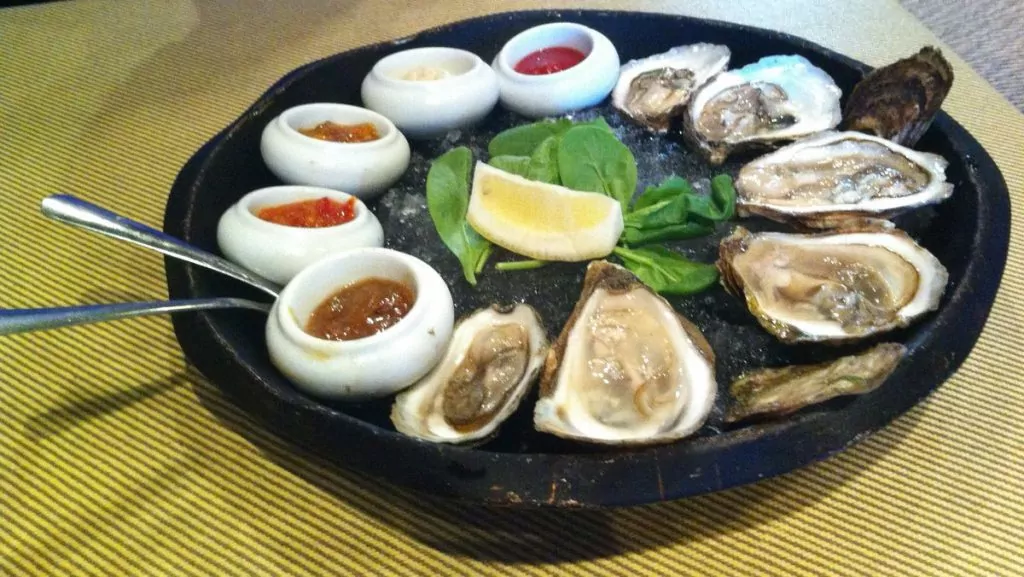
The first time we attempted to buy and open oysters ourselves was in Cancale on the west coast of France, during our long campervan trip 2015. Our internet was poor, so googling instructions was almost impossible, which led to some bloodshed. But eventually we got the shells open, and were able to enjoy the delights.
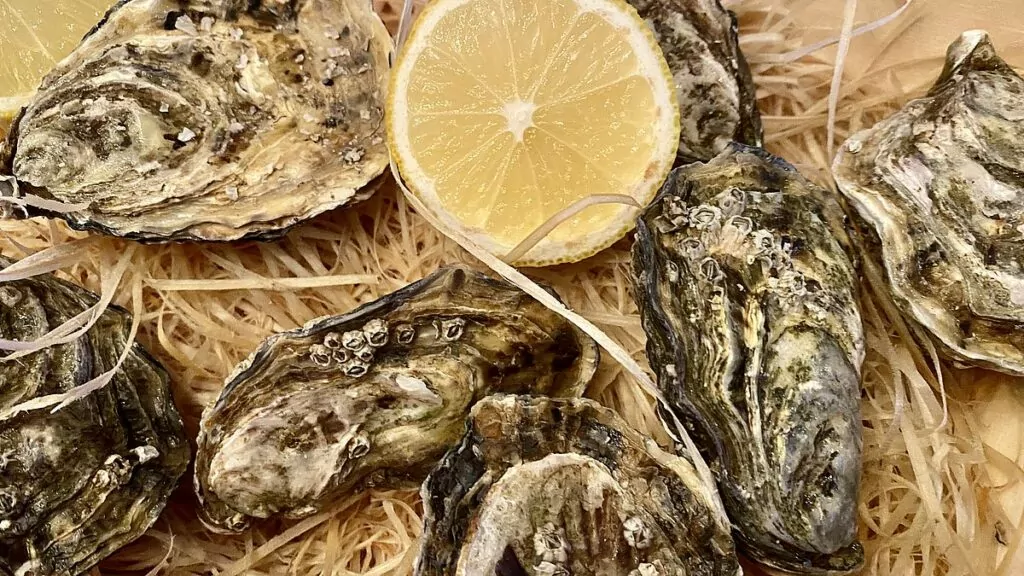
Open oysters - how to do it!
The very first thing to do before opening and enjoying your oysters is to check that they are fresh, i.e. alive. Oysters should be kept cold and will keep for about five days if properly refrigerated. If they are open, smell bad or sound hollow when tapped, it is a sign that they are bad and should be discarded.
1. Place the oyster in a towel
Use a towel to protect your hands. Fold it a few times and place the oyster on the towel, flat side up.
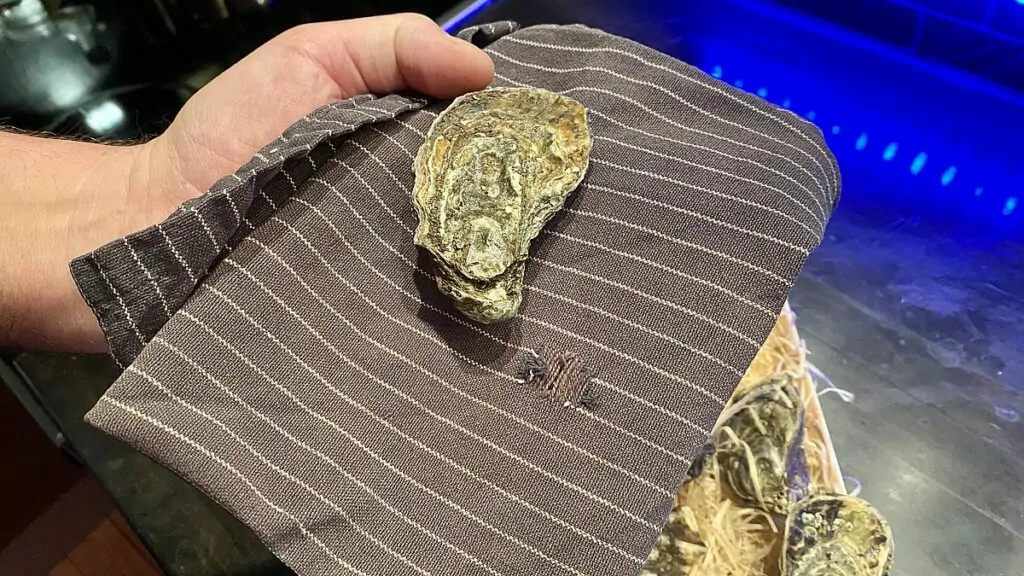
2. Insert the knife
Feel free to use a special oyster knife. These have edges on both sides, making them perfect for the purpose. If you don't have one, you can use a mora knife or a construction knife (which we use in the pictures). Insert the tip of the knife at the "hinge" of the oyster.
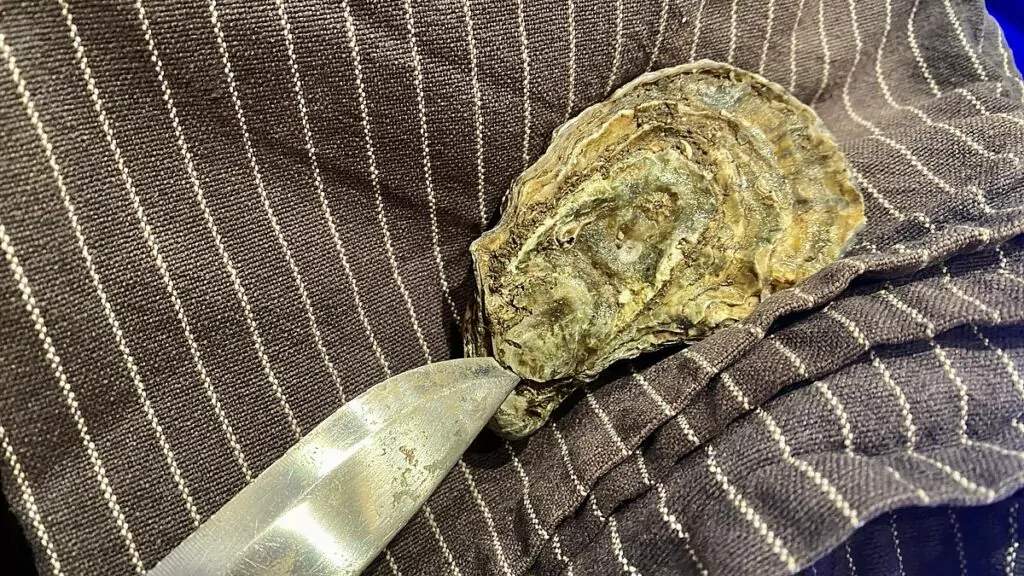
3. Wiggle the knife
Now wiggle the knife, with gentle movements. Do not touch for hard, because then it is easy to slip with the knife. At the same time, some force may be needed to get the hinge to give way.
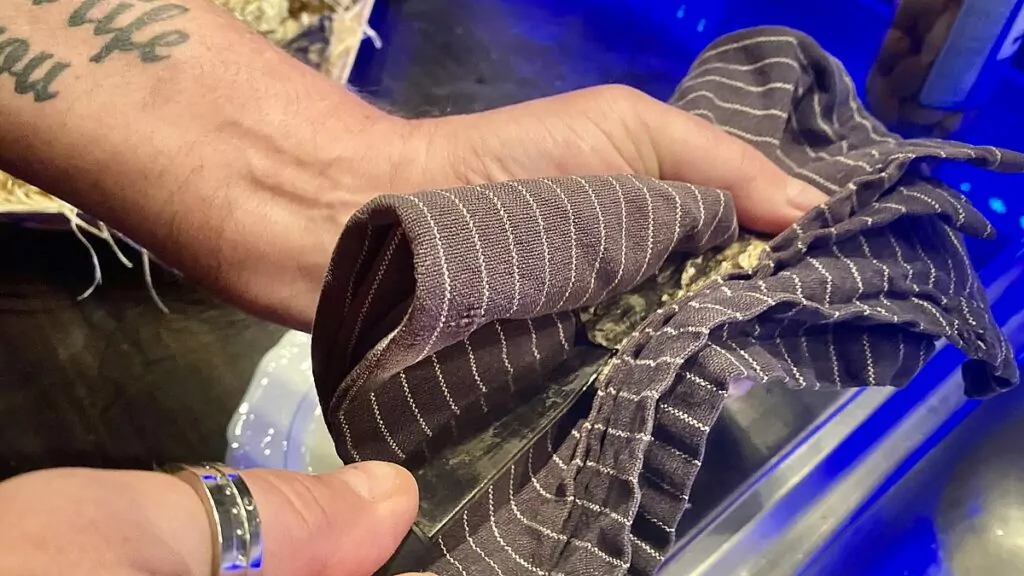
4. loosen the shell
When you feel the hinge release, loosen the upper shell and lift it off.
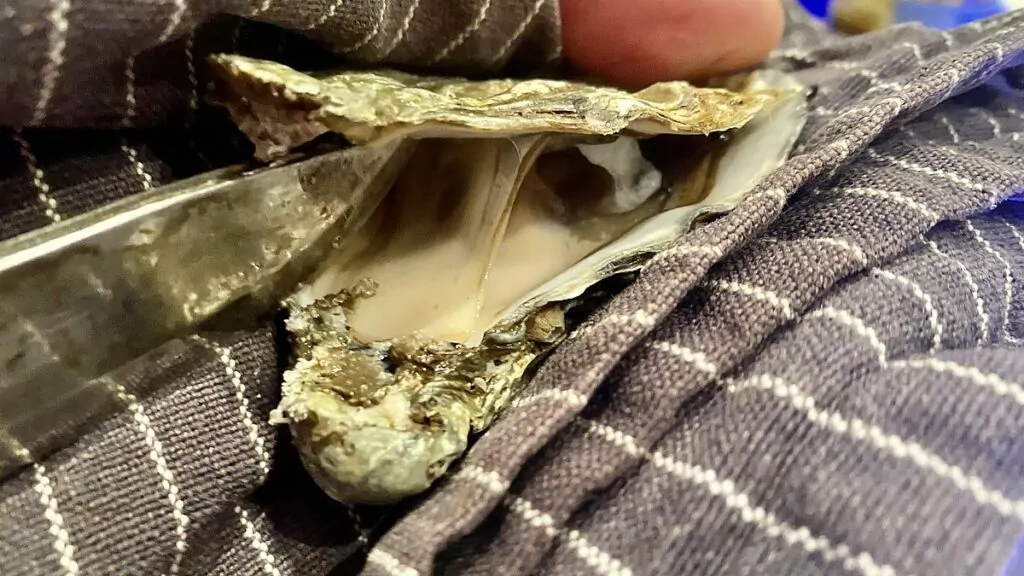
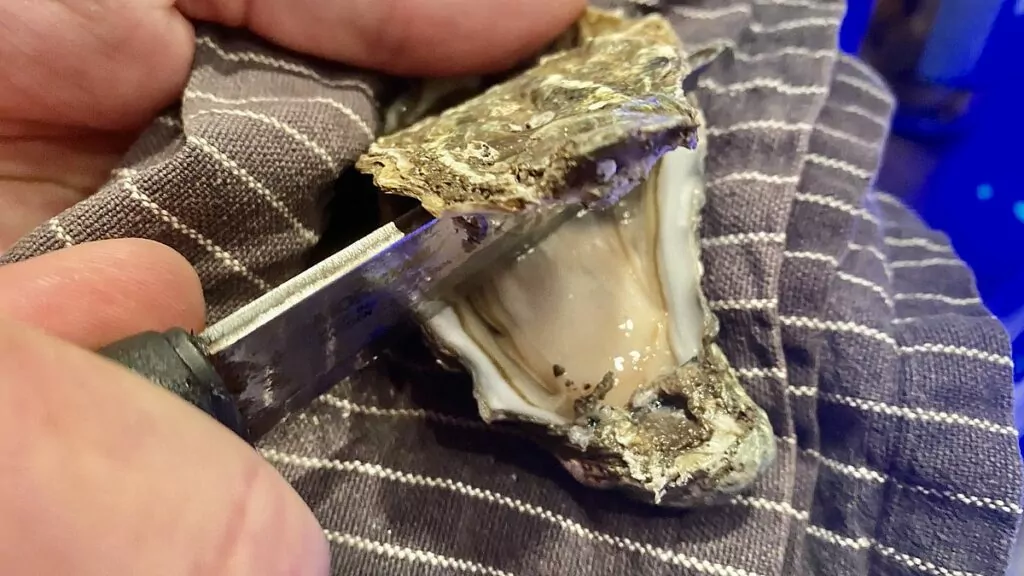
5. Loosen the oyster and serve.
The oyster is stuck in the lower shell. You can gently loosen it with a knife before serving. It is also possible to loosen the oyster with a fork at the table. Be careful that the liquid in the oyster stays in the shell and does not leak out. Then enjoy this delicacy of the sea!
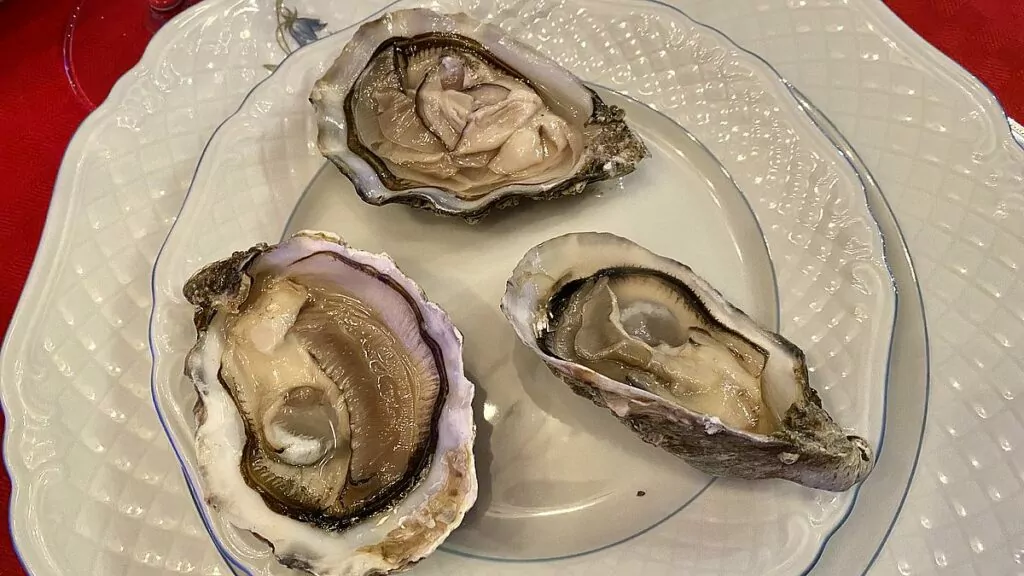
Eating oysters - some tips
So, what is the best way to eat oysters? The most common way is to eat them raw, right out of the shell. After shucking them, you simply swallow the oyster together with the liquid, straight from the shell. You can certainly leave the oyster in your mouth for a while and chew it.
Flavouring?
You don't need any flavouring - the oysters have a lovely sea flavour of their own - but if you want to, you can 'spice things up' a bit. Many people like to drizzle a little lemon. We are among those who like to add a little stronger flavouring. Some people think you "ruin" the oyster with strong flavours, but we like that hot touch. It's simply a matter of taste! Here are some different flavours that you can try:
- Lemon
- Red wine vinegar
- Shallot vinaigrette
- Tabasco
- Sambal oelek
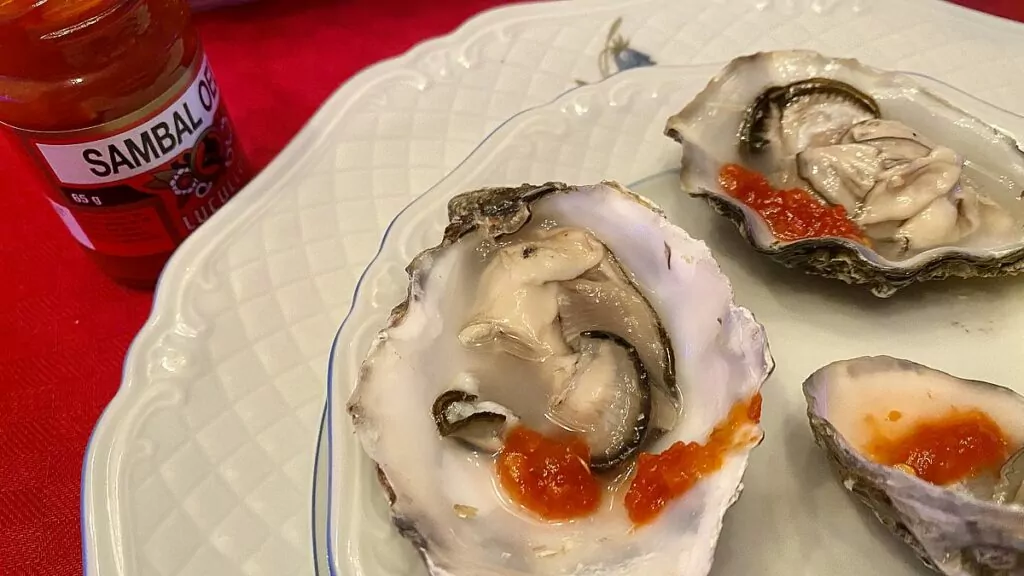
Cooking?
The most common way to eat oysters is raw, but you can also gratinate them if you wish. You open the oysters, put them on a plate, fill the shells with some flavouring and cheese, and then bake them in the oven.
Drinks?
The most common drinks are white wine, sparkling wine or champagne. We have also read that porter (dark top-fermented beer) can be served with the oysters. For ourselves, we have decided to serve a Dry Martini. It adds a little sting!
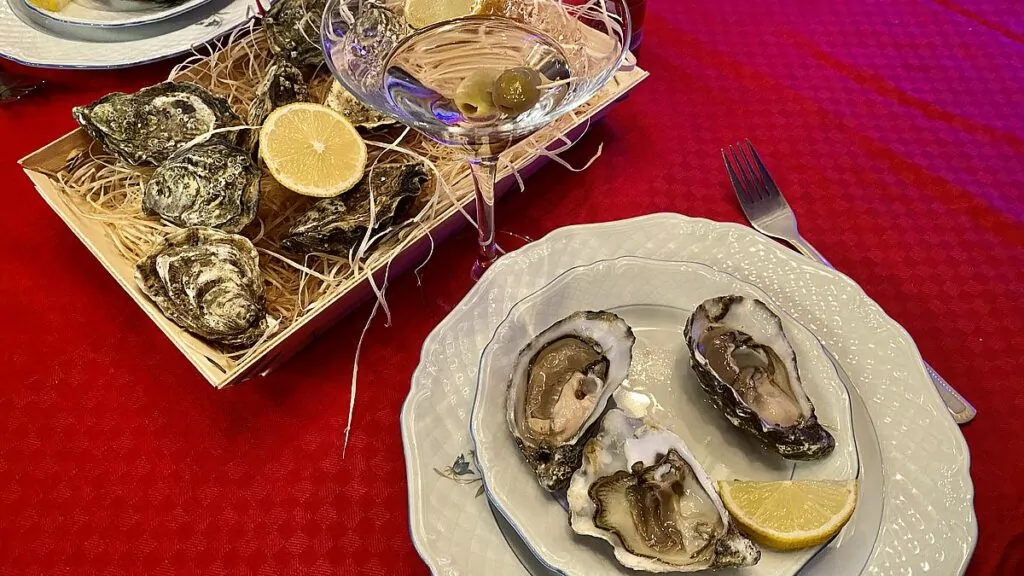
15 facts about oysters
Here we have also collected some exciting facts about oysters. The information has been collected from Ostronakademien.se, Ostronguiden.se, Havochvatten.se, Klemmingsdyk.se and Wikipedia.
1. Oysters are a 'mollusc'
Oysters (Ostreidae) are a type of mollusc that lives in shallow, salty waters. Along with other molluscs, crustaceans and echinoderms, the oyster is also considered a crustacean.
2. The shell is made of lime
The oyster's shell is in two parts and is made of calcium. The animal has a soft body and a strong muscle, which they use to keep the shell closed.
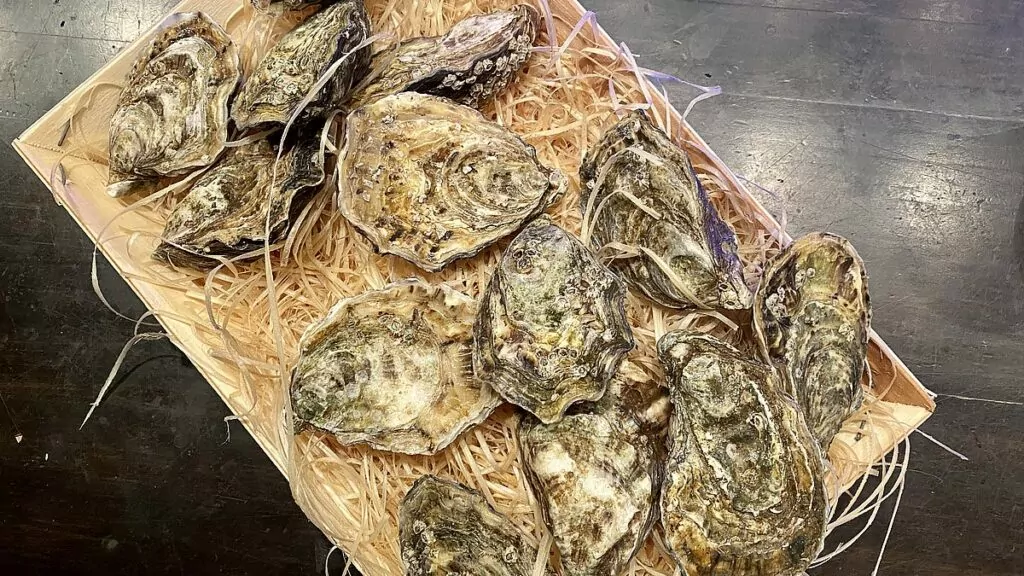
3. Food consists of plankton
Oysters feed on plankton. They use their gills to filter these plankton from water.
4. Oysters undergo sex change
Oysters reach sexual maturity as males, but during their life they change sex depending on temperature and nutritional conditions. If the summer temperature is 15-16°C, they can change sex and become females every three to four years.
5. Animals can live to be over 30 years old
An oyster can live for over 30 years. When they are that old, they can have a shell diameter of over 30 centimetres.
6. Oysters are alive when you open the shell
Fresh oysters that you plan to eat should be alive when you open the shell.
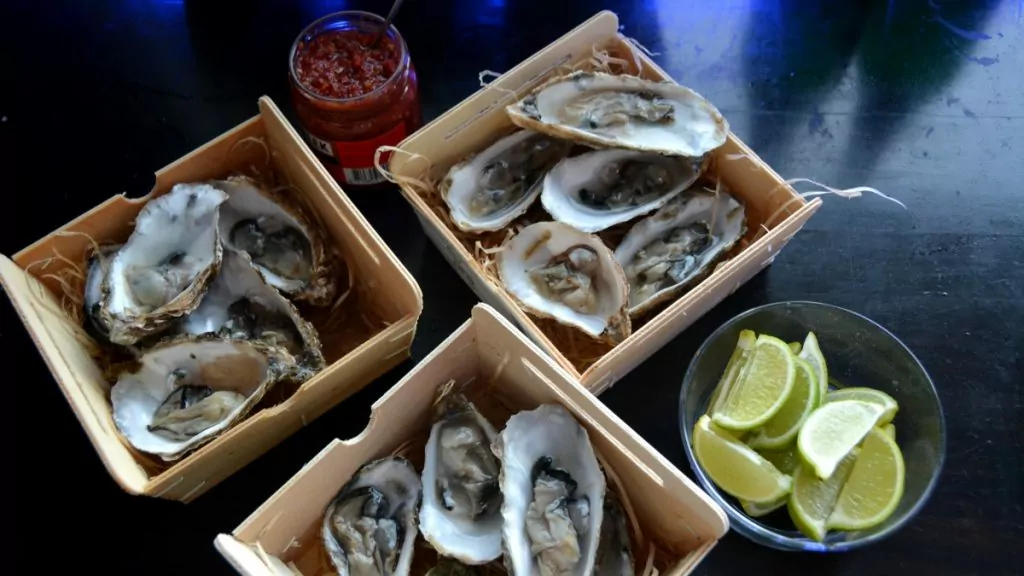
7. The delicacy was already eaten in the Stone Age
In Sweden, oyster shells have been found in kitchen waste from both the Stone and Bronze Ages, and even the Vikings ate oysters. From the 17th century onwards, Swedish courts have feasted on the delicacy, delivered from the Swedish west coast.
8. The French eat the most oysters in the world
The French are the world's largest consumers of this delicacy. In France, more than 30 oysters are eaten per person per year. Most of the oysters we eat in Sweden are imported from farms in France.
9. In Sweden there are two varieties
The European oyster (Ostrea Edulis) is the variety traditionally found in Sweden. Since 2006, the Pacific or Japanese giant oyster (Crassostrea gigas) has also been found in the wild. The new species presents opportunities, but also challenges as it spreads quickly and needs to be thinned.
10. Tides facilitate oyster farming
Oysters are cultivated in several places, including the French Atlantic coast where the large tidal differences make the work easier. During low tide, the farms are accessible by tractor and for turning the oyster baskets. The tides keep the water fresh and force the oysters to open and close, resulting in a firmer texture. In the Mediterranean, 'elevators' are used instead to mimic the tides.
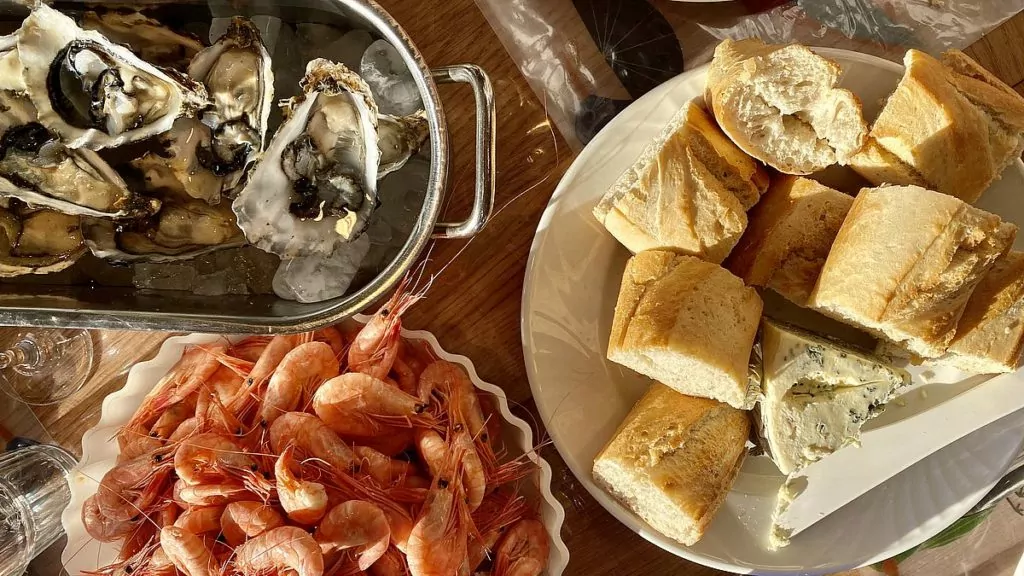
11. Oyster fishing is not free
Oyster fishing is not free in Sweden. Almost all waters are owned by public or private landowners, and you need the landowner's permission to harvest the animals.
12. oyster fishing in Sweden is done with nets or by divers.
Oysters used to be collected with large rakes dragged behind boats, but this is now forbidden because of the destruction of the seabed. Today, fishing is done either with a net or by divers.
13. You can experience 'oyster safaris' on the West Coast
You can book an 'oyster safari' on the West Coast. This means taking part in oyster fishing with binoculars and nets, and if you have a diving licence you can also try oyster diving. Of course, there's also a chance to taste the delicacies.
14. Oyster Day is in September
The oyster premiere always takes place on the first Saturday of September. This day is called 'Oyster Day' and has been established by the Oyster Academy. However, oysters can be fished all year round in Swedish waters.
15. Every year the World Oyster Shucking Championship is organised
Every September, oyster lovers compete against each other in the World Oyster Shucking Championship. The competition is organised during the annual International Oyster & Seafood Festival in Ireland. Galway.
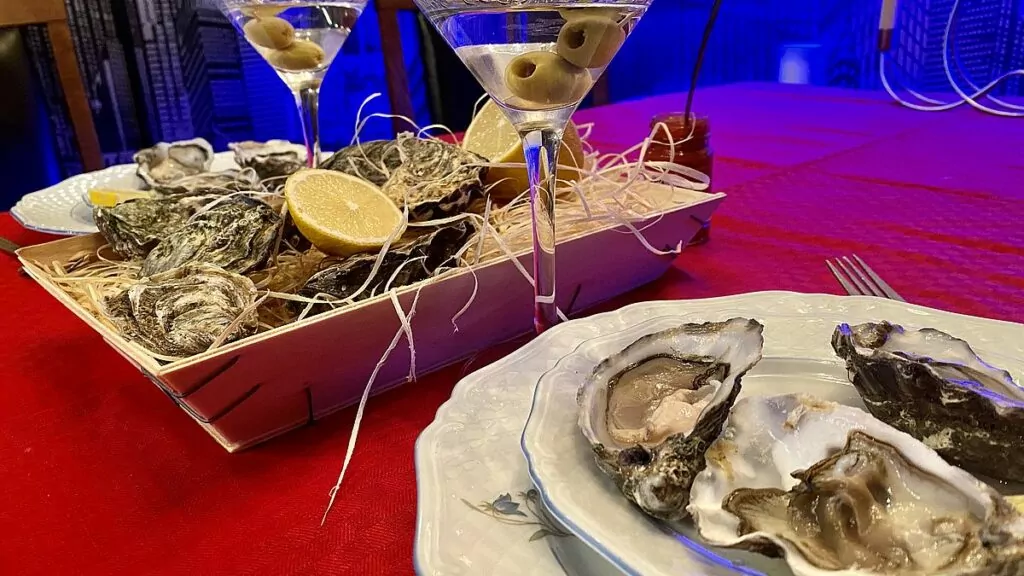
More tips on oysters?
Do you like oysters? Do you have more tips or maybe some exciting stories related to the delicacy? Please tell us!

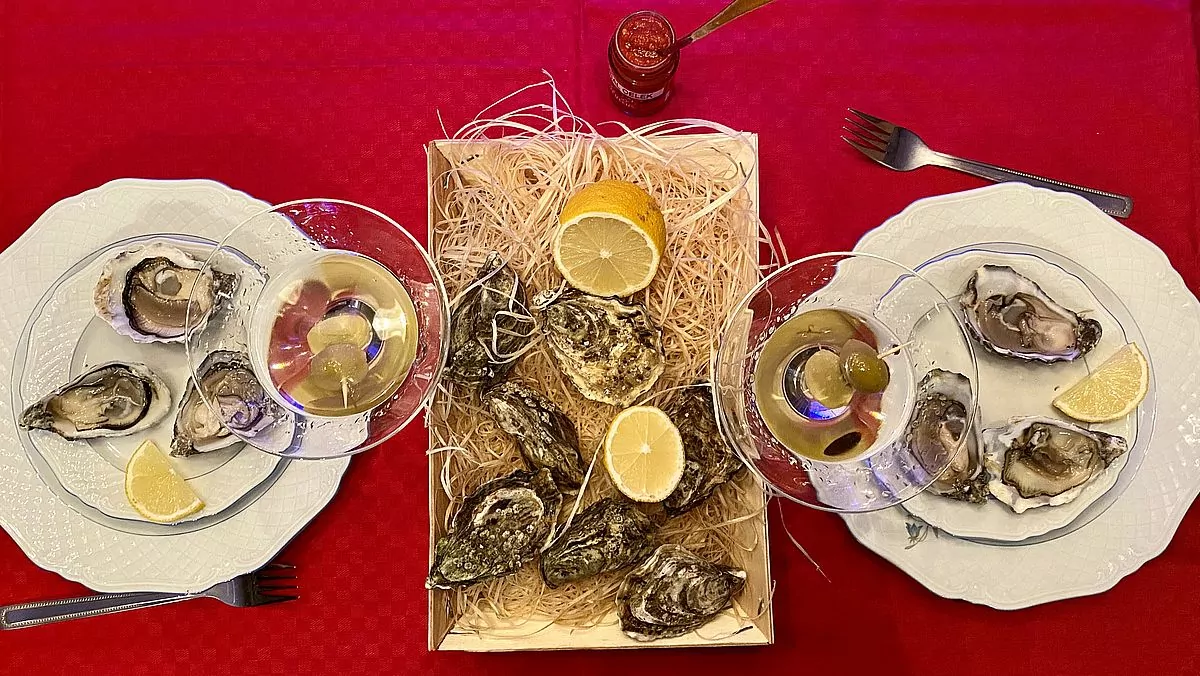














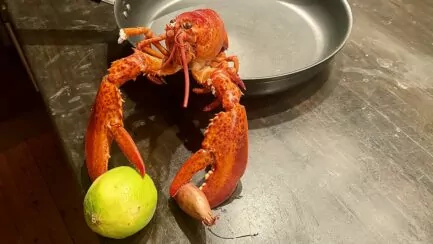



Lena - gott för själen says:
Another interesting post. I had no idea about the sex change thing.
We have had oysters only a few times. The last time was in Berlin a couple of years ago when we ate oysters and drank champagne at lunchtime and in the afternoon we ate bratwurst and drank beer in Tiergarten (the big city park). Lovely with contrasts 😉 .
On New Year's Eve there will be some oysters with the champagne in the afternoon, so your instructions will come in handy!
Hug Lena
27 December 2020 - 7:45
Matts+Torebring says:
Quote: "Some people love oysters, while others may find the texture a bit scary". We are the latter... We have made several attempts at fine seafood restaurants, along the west coast of France. We just can't seem to learn, to like it there.
27 December 2020 - 8:10
Solan says:
Dry Martini with oysters, why not? Unfortunately, our French oyster openers are still in the motorhome... 😅.
But giant problems are there to be solved! 😉
Happy New Year! 👍
27 December 2020 - 8:45
Ama de casa says:
The first time I ate oysters, I had made a bet with the travel company that I would "dare". Only I ordered oysters that time on the Ile de Ré and judge my surprise when the oysters came in whole! The waiter saw my horrified face and went over and lifted the "lid" on one of them, it was just their way of serving them nicely, they were open. I won the bet. Haha!
We had a special kit in Sweden for opening oysters. An "oyster-shaped" holder in some kind of hard plastic and a special knife to attack the oysters. Worked like a charm! When we moved to Spain, we gave the kit to the other couple who were with me when I first started. I thought that we probably wouldn't buy oysters in Spain and we haven't done that either. However, we have continued to eat oysters 🙂 .
27 December 2020 - 9:31
Monika says:
I am one of those people who really LOVE oysters, they really make me happy, I think it's endorphins. The story I think of about oysters is when I had a tourist stomach (which is extremely rare for me) once when my husband and I were travelling in France. My husband didn't want to go to a restaurant by himself so I had to go with him. The waiters (2 of them) came in with one dish after another under silver cups that they lifted. I looked at the dishes and then they went out again. The next day I was no better and the restaurant visit was approaching. I want 12 oysters and absolutely nothing else, I said as my husband ate 3 courses. My stomach felt like a princess and I was fine. The absolute best oysters I have ever had, and I have had many, were in South Africa. They were so rich.
Hugs Monika
27 December 2020 - 9:35
Veiken says:
I grew up on the west coast. In Uddevalla, Gothenburg and just south of Marstrand, with the sea just around the corner. I love the delights of the sea when they are fresh.
I have had lots of cold sores when swimming and bathing in the sea. That's enough.
Cold drinks in shells are definitely not my thing!
Good luck!
27 December 2020 - 12:31
BP says:
Drool, drool! I love oysters, but have so far asked the guy at the fish counter to open them for me. The only requirement is that they must be eaten within two hours, otherwise they go bad. The guy says that every time I ask him to open the oysters. I always eat them with tabasco to get the flavour. My husband doesn't eat oysters. He thinks they look like spittoons. Okay, you can close your eyes then;-)
All the facts about oysters I had no idea about. So thank you very much there:-)
27 December 2020 - 16:50
Ruth i Virginia says:
Agree with your husband.
Oysters don't just look like spitballs,
they feel like that in the mouth too.
I don't like anything that slips into my stomach,
27 December 2020 - 23:23